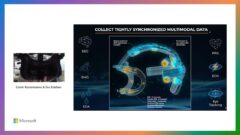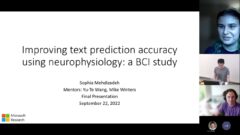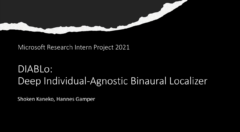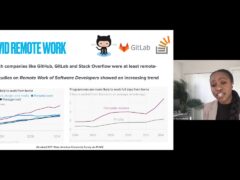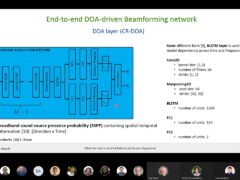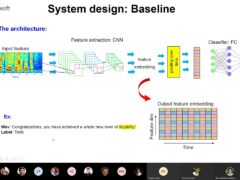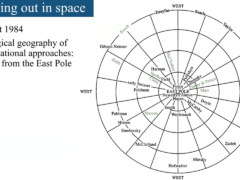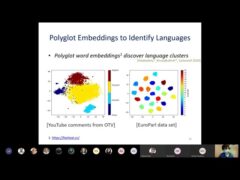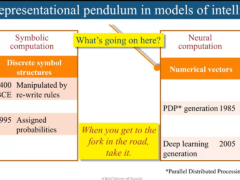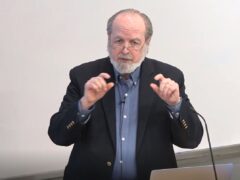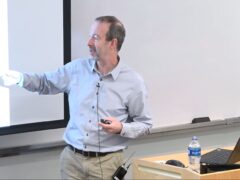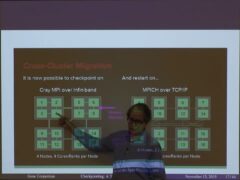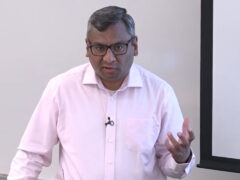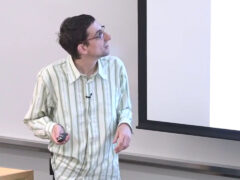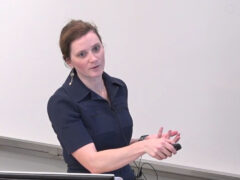Streaming Lower Bounds for Approximating MAX-CUT
We consider the problem of estimating the value of MAX-CUT in a graph in the streaming model of computation. We show that there exists a constant $\e_* > 0$ such that any randomized streaming algorithm that computes a $(1+\e_*)$-approximation to MAX-CUT requires $\Omega(n)$ space on an $n$ vertex graph. By contrast, there are algorithms that produce a $(1+\e)$-approximation in space $O(n/\e^2)$ for every $\e > 0$. Our result is the first linear space lower bound for the task of approximating the max cut value and partially answers an open question from the literature~\cite{Ber67}. The prior state of the art ruled out $(2-\epsilon)$-approximation in $\tilde{O}(\sqrt{n})$ space or $(1+\e)$-approximation in $n^{1-O(\e)}$ space, for any $\epsilon > 0$.
Previous lower bounds for the MAX-CUT problem relied, in essence, on a lower bound on the communication complexity of the following task: Several players are each given some edges of a graph and they wish to determine if the union of these edges is $\e$-close to forming a bipartite graph, using one-way communication. The previous works proved a lower bound of $\Omega(\sqrt{n})$ for this task when $\e=1/2$, and $n^{1-O(\e)}$ for every $\e>0$, even when one of the players is given a candidate bipartition of the promised to be bipartite with respect to this partition or $\e$-far from bipartite. This added information was essential in enabling the previous analyses but also yields a weak bound since, with this extra information, there is an $n^{1-O(\e)}$ communication protocol for this problem. In this work, we give an $\Omega(n)$ lower bound on the communication complexity of the original problem (without the extra information) for $\e=\Omega(1)$ in the three-player setting. Obtaining this $\Omega(n)$ lower bound on the communication complexity is the main technical result in this paper. We achieve it by a delicate choice of distributions on instances as well as a novel use of the convolution theorem from Fourier analysis combined with graph-theoretic considerations to analyze the communication complexity.
- Series:
- Microsoft Research Talks
- Date:
- Speakers:
- Michael Kapralov
- Affiliation:
- EPFL Lausanne, Switzerland
-
-

Yuval Peres
Principal Researcher
-
-
Series: Microsoft Research Talks
-
-
-
-
Galea: The Bridge Between Mixed Reality and Neurotechnology
Speakers:- Eva Esteban,
- Conor Russomanno
-
Current and Future Application of BCIs
Speakers:- Christoph Guger
-
Challenges in Evolving a Successful Database Product (SQL Server) to a Cloud Service (SQL Azure)
Speakers:- Hanuma Kodavalla,
- Phil Bernstein
-
Improving text prediction accuracy using neurophysiology
Speakers:- Sophia Mehdizadeh
-
-
DIABLo: a Deep Individual-Agnostic Binaural Localizer
Speakers:- Shoken Kaneko
-
-
Recent Efforts Towards Efficient And Scalable Neural Waveform Coding
Speakers:- Kai Zhen
-
-
Audio-based Toxic Language Detection
Speakers:- Midia Yousefi
-
-
From SqueezeNet to SqueezeBERT: Developing Efficient Deep Neural Networks
Speakers:- Sujeeth Bharadwaj
-
Hope Speech and Help Speech: Surfacing Positivity Amidst Hate
Speakers:- Monojit Choudhury
-
-
-
-
-
'F' to 'A' on the N.Y. Regents Science Exams: An Overview of the Aristo Project
Speakers:- Peter Clark
-
Checkpointing the Un-checkpointable: the Split-Process Approach for MPI and Formal Verification
Speakers:- Gene Cooperman
-
Learning Structured Models for Safe Robot Control
Speakers:- Ashish Kapoor
-
-




